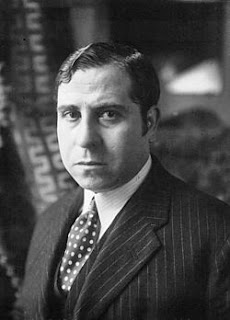Mexican Spanish, why learn it? / El español de México, ¿por qué aprenderlo?
- Bubbles of Language -
Mexican Spanish, why learn it?
Concerning Spanish learning, most students are often overwhelmed by the wide range of dialects that exist in Spanish. Because of the significant differences among each dialect, students ask themselves: Which one is better to learn?
On this occasion, I share with you nine facts about Mexican Spanish:
1. Mexico has the biggest number of Spanish speakers in the world. With around 112 millions of inhabitants, in Mexico we exceed twice the number of Spanish speakers in any other country of the world. Further details are available on the report by Instituto Cervantes.
2. In Mexico there are four main Spanish variants:
- The north speech, in states such as Chihuahua and Sonora. Its features are an abundance of words of English origin, such as soda instead of refresco; and a typical pronunciation of the digraph ch as the sh group in English in words like chico, muchcho, etc.
A soda in Chihuahua, a refresco in Mexico City
- The southeast speech, in states such as Chiapas and Yucatán, presents notable features as the use of voseo (the pronoun vos is used instead of tú) in some regions; and a distinctive pronunciation influenced by the Mayan language; words such as melón are pronounced more like melong.
Chichén Itzá pyramid in Yucatán
- The coastal speeches, in states such as Tabasco and Veracruz, have as features its intonation, the aspiration s at the end of a syllable and the weakening of d between vowels; pescado is pronounced pehcao.
Coatzacoalcos beach in Veracruz
- The Plateau speech is the standard variant, the most popular and used one nationwide. It's also the most known variety worldwide. This is the variant we are going to talk about next.
Palace of Fine Arts, Ciudad de México
3. The pronoun vosotros used in Spain is here replaced by ustedes and its conjugation is the same as ellos.
Mexico: ustedes dicen, decían, dijeron > Spain: vosotros decís, decíais, dijisteis.
4. Many common words come from Nahuatl or other indigenous languages. For example: papalote (kite; from papalotl: butterfly) and escuincle (child; from itzcuintli: dog).
Un papalote
5. Many words and expressions now forgotten in Spain, still remain in force in Mexico. For example: se me hace (informal I think that; in Spain: me parece), pararse (stand up; in Spain: ponerse de pie)
6. Beware of regionalisms! There are particular words that carry different meanings in Mexico and other regions. In Mexico a torta is a kind of sandwich, but in Argentina and other countries is a big cake.
7. In Mexico we use many English words such as ok, bye, checar, clóset, claxon, shampoo, pants, hotcakes and tennis.
Hotcakes
8. As in the rest of Hispanic America and the south of Spain, Mexico features seseo; the pronunciation of the letters c (before e, i) and z is the same as the letter s. Words such as caza (hunt) and casa (house), or coser (to sew) and cocer (to cook/boil) are pronounced the same way.
9. Neutral Spanish, which is used worldwide in media and entertainment to be understood by all Spanish speakers, is based on the standard of Mexican Spanish. Neutral Spanish is based more on cultivated speech and avoids regionalisms. It is the standard of Spanish that you will find more often in TV series and movies.
Finally, learning Mexican Spanish also means to approach a rich and ancestral culture, a melting pot of the European and indigenous cultures. So now you know, if what you want is to learn a popular Spanish, with a lot of speakers and worldwide use, Mexican Spanish is a good option!
On this occasion, I share with you nine facts about Mexican Spanish:
1. Mexico has the biggest number of Spanish speakers in the world. With around 112 millions of inhabitants, in Mexico we exceed twice the number of Spanish speakers in any other country of the world. Further details are available on the report by Instituto Cervantes.
9. Neutral Spanish, which is used worldwide in media and entertainment to be understood by all Spanish speakers, is based on the standard of Mexican Spanish. Neutral Spanish is based more on cultivated speech and avoids regionalisms. It is the standard of Spanish that you will find more often in TV series and movies.
***
- Burbujas de lengua -
El español de México, ¿por qué aprenderlo?
En el aprendizaje del Español como Lengua Extranjera, los estudiantes suelen abrumarse ante la gran variedad de dialectos que existen en el español. Debido a las considerables diferencias entre cada dialecto, los estudiantes se preguntan: ¿Qué dialecto es mejor aprender?
En esta ocasión les comparto nueve datos sobre el español en México:
1. México posee el mayor número de hispanohablantes en el mundo. Con alrededor de 112 millones de habitantes, en México sobrepasamos el doble de hispanohablantes que en cualquier otro país del mundo. Más información en el Informe del Instituto Cervantes.
2. En México existen cuatro principales variantes del español:
- El habla del norte, en estados como Chihuahua y Sonora, tiene como características una mayor abundancia de palabras de origen inglés, con palabras como soda en lugar de refresco; y una pronunciación característica del dígrafo ch que se pronuncia como el grupo sh en inglés en palabras como chico, muchacho, etc.
Una soda en Chihuahua, un refresco en Ciudad de México
- El habla del sureste, en estados como Chiapas y Yucatán, presenta características notables como el uso del voseo (se usa el pronombre vos en lugar de tú) en algunas regiones; y una pronunciación característica influida por la lengua maya; palabras como melón suenan más como melong.
Pirámide de Chichén Itzá en Yucatán
- Las hablas costeñas, en estados como Tabasco y Veracruz, se caracterizan por su entonación, la aspiración de la s final de una sílaba y el debilitamiento de la d entre vocales; pescado se pronuncia pehcao.
Playa de Coatzacoalcos en Veracruz
- El habla del Altiplano es la variante estándar, la más popular y de mayor uso en todo México. Comprende centro y sur del país. Es la variedad más conocida internacionalmente. Ésta es la variante de la que hablaremos a continuación.
Palacio de Bellas Artes, Ciudad de México
3. El pronombre vosotros utilizado en España es reemplazado por ustedes y se conjuga igual que ellos:
Méx: ustedes dicen, decían, dijeron > Esp: vosotros decís, decíais, dijisteis.
4. Muchas palabras de uso común son de origen nahuatl o de otras lenguas indígenas. Por ejemplo: papalote (de papalotl, mariposa) y escuincle (de itzcuintli, perro).
Un papalote
5. Muchas palabras y expresiones que se han olvidado en España, siguen vigentes en México. Por ejemplo: se me hace (me parece), pararse (ponerse de pie)
6. ¡Cuidado con los regionalismos! Hay palabras particulares que tienen significados diferentes en México y en otras regiones. En México una torta es un tipo de sandwich, pero en Argentina y otros países es un pastel grande.
7. En México usamos muchas palabras tomadas del idioma inglés, como ok, bye, checar, clóset, claxon, shampoo, pants, hotcakes y tenis.
Hotcakes
8. Así como en el resto de Hispanoamérica y el sur de España, México presenta seseo: la pronunciación de las letras c (frente a e, i) y z es igual a la letra s. Palabras como caza y casa, o coser y cocer se pronuncian igual.
9. El español neutro, que se usa de forma internacional en medios de comunicación y entretenimiento para ser comprendido por todos los hispanohablantes, se basa en el modelo estándar del español mexicano. El español neutro se basa más en el habla culta y evita los regionalismos. Es el modelo de español que encontrarás con mayor frecuencia en series y películas.
Finalmente, aprender el español mexicano significa también acercarse a una cultura rica y ancestral, producto del mestizaje indígena y europeo. Así que ya saben, si lo que quieren es aprender un español popular, con muchos hablantes y uso internacional, ¡el español de México es una buena opción!












Comentarios
Publicar un comentario